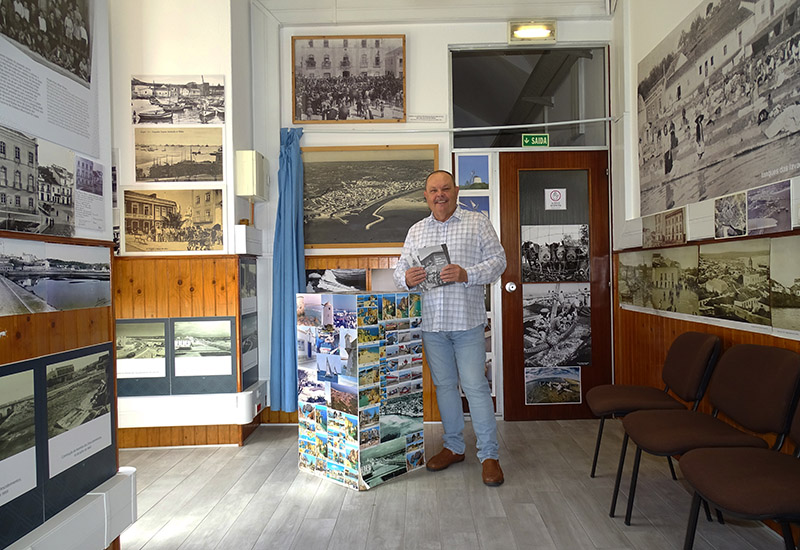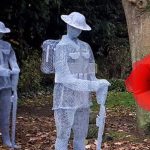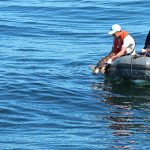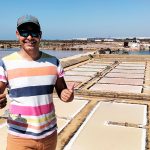In the heart of the old city of Lagos lies the Fototeca Municipal de Lagos, the Photo Library of Lagos. It contains images of events, works, places, buildings, people, art and more. I met with the library manager, Francisco Castelo, to delve into this priceless archive.
There are thousands of old images, now digitised, contained within its walls, as well as frames on film, paper photos and contemporary scanned photos. Particularly interesting are the photo stories through the years. One that caught my eye was the development of the Lagos waterfront from the late 1800s to the present.



The main function of the library is to manage the archives, photograph patrimonial events, recover memories from antique photos, preserve them for future generations and share them with the community. Francisco, an accomplished photographer, shoots many of the contemporary images himself.
Besides photographic records of events, places, and the municipality’s architectural, historical and natural heritage, various and diverse photographs of pieces of art are used for exhibition catalogues. Historical research is carried out on the existence of photographic records (from 1850 to the present day) and general research of documentary data that complements the information in the images is also done.
Images are provided to municipal departments, and to the press, media, students and citizens in general. There is an annual workshop on the ever-evolving digital photography and involvement in photography contests.


Francisco Castelo began photography in 1978 and joined the local administration in 1993. With an academic background in history, administrative law and municipal management, he researches old images. He creates content for publications and photo-documentary exhibitions, among other projects highlighting the value of photography as a historical source and element of cultural heritage.
Francisco has written a small collection of fictional portraits that are available on a flash drive. Two fictional short stories of a humorous genre are included. Diário de um Asilado (Diary of an Asylum Inmate) and Crónicas de uma Peste (Chronicles of a Plague). These works will be presented to the public at the 14th Lagos Author’s Book Exhibition, which takes place from 16–30 June at the Armazem Regimental de Lagos. All stories are in Portuguese, and only a symbolic price will be charged.

A history told in photos
Delving into the photographic records, I was intrigued by the story they told in photographs of Britain’s naval partnership with Portugal. A cordial relationship between Britain and Portugal goes back to 1386, but the photographic story begins in the late 1800s. The bay of Lagos was frequently visited by the Royal Navy Mediterranean Fleet (active from c.1665 until 1967) en route to its base in La Valletta-Malta. Here, they stocked supplies and performed annual naval exercises.
The Treaty of Windsor was signed in 1389. The marriage of the Portuguese monarch to the daughter of the Duke of Lancaster cemented the relationship. Fast forward to the Battle of Lagos in 1759 between the French and the British, resulting in a victory for the Royal Navy. By 1901, photographs began to tell the story (a picture is worth a thousand words). Naval exercises by the Royal Navy Mediterranean and Atlantic fleets were routinely carried out in the Bay of Lagos.




In 1905, His Majesty King Carlos of Portugal visited the combined fleets of the Royal Navy in Lagos and presented a cup to the winners of a naval sailing regatta. In February 1906, the British Mediterranean and Atlantic fleets were involved in extensive training exercises off Lagos and when they anchored, fully dressed with the Portuguese courtesy flags, the ship’s thundered out a 21-gun salute and a ship’s band played the Portuguese National Anthem.
In 1927, admiral and commander of a squadron in the Atlantic fleet, Admiral Fuller, was invited to review the local infantry regiment by Colonel Negrão, who then made him the guard of honour.
By 1937, Germany’s rearmament had begun and was visible on occasion in the Bay of Lagos. The intelligence of these activities led the UK to intensify its wartime footing and to demonstrate its naval power.
In 1944, a battle-class destroyer of the Royal Navy, the HMS Lagos, was named in honour of the Battle of Lagos in 1759. She was commissioned in 1945. In 1957, HMS Lagos joined the 1st Destroyer Squadron, where it saw service with the Home and Mediterranean fleets.
By the 1960s, with the development of the Polaris fleet, the Royal Navy became Britain’s strategic force of last resort. The structure of the maritime empire provided by coaling stations, watering and resupply stations had gone. So had the imperative of protecting trade. Now, the targets they aimed at and the attacks they sought to deter were land-based. Naval exercises at various points in the North Atlantic involving large national squadrons had already been replaced by combined international forces within NATO. However, the friendship between the two nations continues to this day.
Opening hours
The library receives visitors by appointment during the institution’s normal working hours: +351 282 771 725
However, if you are looking for a specific photograph, please submit your request to the library by email in advance: fototeca@cm-lagos.pt
Please note that not all photographs held by the library can be released to third parties due to permission restrictions.
Visit fototeca.cm-lagos.pt for more photos and 7n8h5b.s.cld.pt for Francisco’s articles and fiction stories.
Main image: Francisco Castelo, the Lagos Photo Library manager













